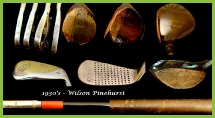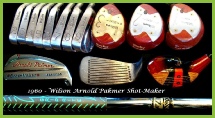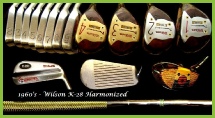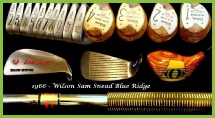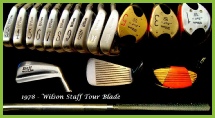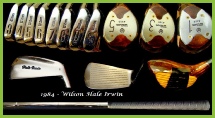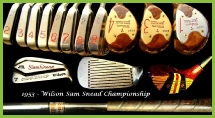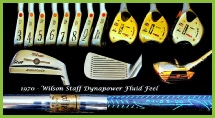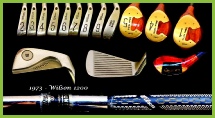

Early History
The Wilson Staff golf department came into existence in 1914 after the emergence of Walter Hagen as a major sporting personality in the United States. After his U.S. Open win, a need for a major golfing brand was inherent in the U.S. market. This need was filled by Wilson Staff and their golf clubs, and inspired by the assembly line techniques of Henry Ford. The company first began making golf clubs as the Thomas E. Wilson Sporting Co.
Between the Wars
American golfer Gene Sarazen became the first adviser to Wilson Staff, and the company began creating their clubs with his professional advice. In 1933, Wilson introduced the Wilson Ogg-mented irons. These new irons revolutionized clubs in the United States, moving the weight of the club away from the heel and to the ball-striking sweet spot of the head.
Introduction of the Sand Wedge
Also in 1933, Gene Sarazen began experimenting for Wilson with a club that would move through sand bunkers smoothly. He welded a piece of metal to the sole of the club, giving it a weighted bottom that would bounce off the sand or ground. The club would come to be known as the R-90 sand wedge and sold an astounding 50,000 copies in its first year on the market.
Top Club on Tour
Sam Snead, Patty Berg and club makers Hall of Famer Bob Mendralla would join the Wilson Advisory Staff by 1947, and would direct the company in the production of clubs for years to come. The 1970's would see Wilson Staff introduce more revolutions into the golf club world, including the Dyna-Power, the Fluid Feel and the FG Series blades. By 1983, Wilson clubs were the number one club on the PGA Tour.
1980's and 1990's
The company would remain the number one club throughout the 1980's, introducing the Staff Tour Blade in 1985. This club would be introduced alongside the Staff persimmon woods, which featured aluminium face inserts, and would go on to be the top woods in the sport. In 1990, the Staff FG-51 was introduced and new Dyna-Powered wedges were made by Bob Mendralla, along with a reincarnation of Snead's R-90 sand wedge.
21st Century
In 1995 mid sized forged irons were first introduced and 1997 saw the new Fat Shaft irons changing torque ideas on the professional tours. Further innovations were made with nanotechnology in 2004, with the Deep Red driver in 2003, with the Ci6 irons in 2006 and the Di7 irons in 2007.
